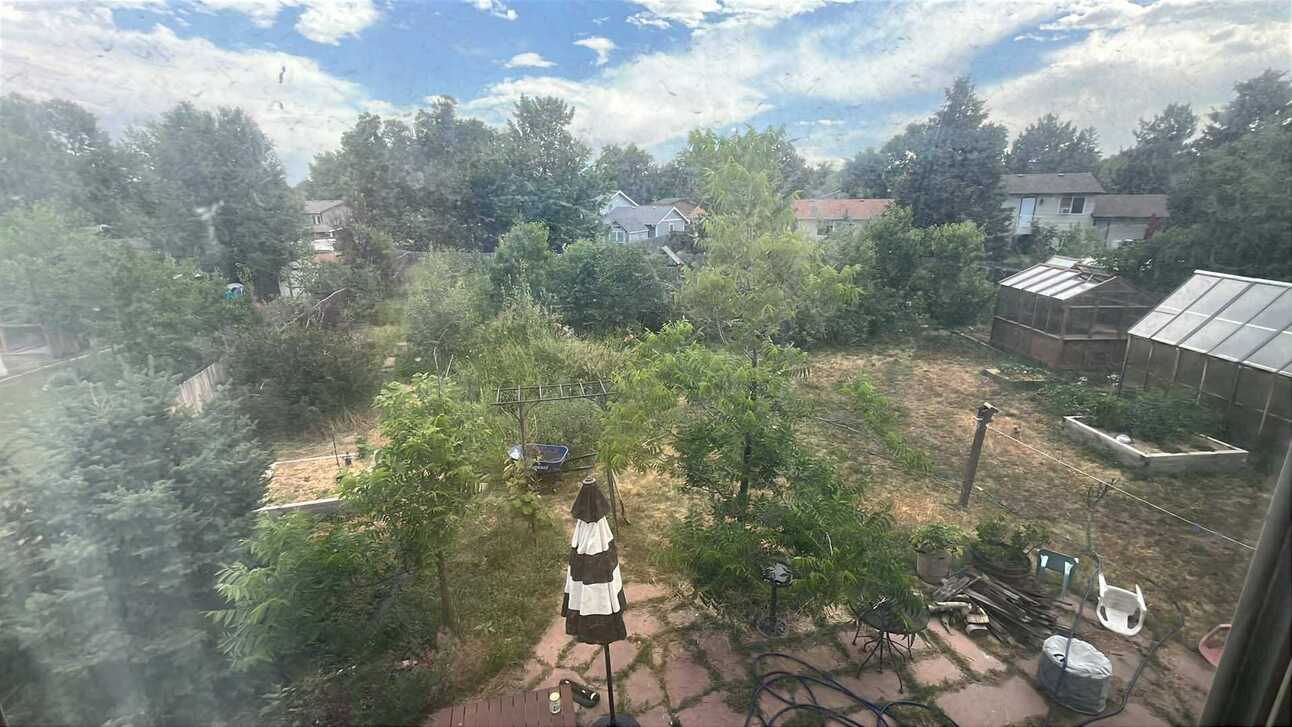My parents’ suburban lawn stole years of life from my father.
I remember, as a kid growing up in north Texas, that my dad spent at least three or four afternoons every week during the warm months (which is about eight or nine months a year in north Texas) doing yard work. He would mow the front yard, or mow the back yard. He would trim hedges. He would fix sprinklers. He would fertilize or weed. Hours upon hours of labor every single year with nothing to show for it.
I say nothing. He would have said he had a yard to be proud of. He and my grandfather were both from generations that took great pride in a well maintained lawn. If you ever watched the show “King of the Hill,” it parodied this attitude extremely accurately. (Coincidentally, it was set in a fictional version of the suburb right next to the one I grew up in.)
My father died relatively young — not from any lawn-related tragedy, but from leukemia — and one of the things I will never forget was how angry he was at the fact that he was being robbed of time. He got sick about six months after he retired, and he was realizing that he wasn’t going to get to do all the things he had been waiting his whole life to have time to do. He wouldn’t get to draw, or play his guitar, or go fishing with his dad.
I don’t know if he drew any correlation with the fact that he could have spent all that time — weeks, months, years of his life — doing things he wanted to do if he hadn’t been so busy maintaining our lawn. But in the years since, I have.
The average American homeowner who maintains their lawn themselves, spends more than 70 hours per year on lawn care — nearly two full work weeks. In hotter climates like Texas, it’s likely double that.
Now, more than a decade after his passing, as my mother is staring down the prospect of maintaining her home on a fixed income, the cost of maintaining the lawn is a major line item on her monthly budget, both for the water to keep it growing and green and the labor she must hire to keep it tidy and attractive.
And for what?
Grass lawns have got to be one of the biggest hoodwinks the middle class was ever sold. The trend of having vast swathes of grass outside one’s home was started by the aristocracy, specifically to signify that they were so wealthy they could afford to let huge parcels of land produce nothing of any value. And then it became part of the American dream to own a single-family home with a tract of land — that produces nothing, yet requires huge investments of resources and labor to maintain.
Lawns aren’t the natural state of most of the land around our homes, and therefore require a large amount of resources to maintain.
A lawn requires added water (beyond natural rainfall) to maintain it in most of the United States. In fact, lawns account for up to 50% of all residential water use in the U.S. In hot climates, grass requires around 0.5–1 inch of water per week to stay green — that’s over 26,000 gallons per year for a 1,000 square foot lawn.
Here in the suburbs, we pay for that water — and the less of it your area naturally has, the more you will pay.
Then, because a grass lawn is an unnatural monoculture, it requires regular applications of fertilizer, because it’s taking nutrients from the soil and putting nothing back. If you want to maintain that monoculture, you’ll also need to apply herbicides at least once a year to remove any invaders that might provide a hint of biodiversity. This is so common, so readily accepted, that the products are combined and called “weed and feed” and readily sold at all garden centers.
Did you know: homeowners use ten times more chemicals per acre on their lawns than farmers use on crops? These chemicals often run off into local waterways, contributing to algal blooms, fish die-offs, and drinking water contamination.
And it requires labor. A lawn must be maintained at a certain height. Not a natural height, mind you, because most grasses will get several feet tall when left to their own devices, but an unnatural height, possibly dictated for you by your neighborhood homeowners association who are similarly unnaturally obsessed with ensuring that the entire neighborhood looks homogeneous and uniform right down to the height of the grass that produces nothing in the yard.
The tools to maintain the lawn also require resources. Most of us don’t get out there with a scythe or even a reel mower to cut the grass; we use a lawn mower, a weed whacker, an edger, and a leaf blower (god forbid) that use gas or electricity to run. A single gas-powered lawn mower emits as much pollution in one hour as driving a car 300 miles. More finite resources.
And the lawn gives almost nothing back in return. Grass isn’t a particularly efficient oxygen producer compared to many other types of plants. It’s not a particularly good carbon sink. It doesn’t feed any animals except maybe the local wild rabbits, because most suburbs don’t allow any kind of ungulate that might eat it. It isn’t allowed to grow to the stage of maturity at which it would produce flowers or seeds, so it doesn’t feed pollinators or birds and rodents — likely contributing to the decline of pollinator species overall.
Yet this is what we’re told is the pinnacle of American home ownership: owning land that produces nothing, but that we must pay for in time, resources, and money, to maintain to someone else’s standards.
And there are absolutely two classes of home owners in America: those who can afford to pay someone else to maintain their lawns, and those who choose to (or must) do so themselves.
I’ve chosen a different path, one that would likely have both my father and grandfather scratching their heads.
My front yard is still “grass” — though, in reality, it is mostly “weeds” and other native plants at this point — and we keep it more or less mowed. We try to let it grow through “no mow May” to allow pollinators and other insects to thrive undisturbed at a critical time in their development. But after that, it looks fairly respectable.
My back yard on the other hand…

View of my back yard from a second-floor window.
We’ve spent the last five years or so turning our yard into a food forest. It’s definitely not perfect. It doesn’t adhere to all of the principles of permaculture, I don’t have perfect guilds of complimentary plants growing around the base of all my fruit trees, and we still have to water the trees and other plants from city water, not simply from storing and moving rain efficiently (though, we do some of that, too).
But it’s a jungle paradise compared to the neat, tidy, unnatural squares of lawn my neighbors have.
It still requires inputs of water, and time, and fertilizer (mostly in the form of compost we make from our food and yard scraps) — but at least it gives us something back in return.
Last year we harvested and ate or gave away more than 300 pounds of apples, 60 pounds of peaches, plums, raspberries, rhubarb, strawberries, blueberries, blackberries, and six beautiful pears. I made enough pickles from our cucumbers to last us the entire year. I put up pounds and pounds of Swiss chard and other greens in the freezer that we ate on for months. I had gallons of jam and tomatoes that I canned for us to eat and share with friends and neighbors. We harvested and ate our first home-grown potatoes, which was fun. I dried bundles of herbs to use all year long. And I have fresh flowers on my table every week of the summer and fall.
Does your grass lawn do any of that?
When we first started putting in the food forest, my mother-in-law pronounced that there was absolutely no way we could produce enough food to feed our family on the little quarter of an acre lot we have. And she’s right. Grains, protein (even beans), sugars of any kind — there’s not nearly enough space to grow what our family would want to eat. We don’t even produce enough fruit and veg at this point to fully replace our grocery store or feed us for a year.
But the resources — time, money, energy, water — that we spend to grow the food would still be used if we were just growing grass.
Our trees and plants naturally cool our yard. Studies show that strategically placed trees and shrubs can lower surrounding air temperatures by up to 9°F and reduce household cooling needs by 20–50%. They are actually a natural fire break because they are fresh and green and wet. The biodiversity and natural mulch we use is improving our nasty, hard, clay soil.
And the variety of animals and insects we attract is astonishing and delightful. We have seen rabbits, squirrels, voles, field mice, a rat, raccoons, foxes, dozens of species of birds, and innumerable species of insects that call our yard home.
That’s because native and biodiverse landscapes can support up to 50 times more wildlife species than traditional lawns! In fact, I got our yard certified as a Certified Wildlife Habitat with the National Wildlife Foundation (Ranger Rick!).
In short, it feels like we’re contributing to the ecosystem instead of just taking from it and destroying it.
Maybe I’m just a pollyanna about all this. I realize there are many reasons why someone couldn’t take out their grass lawn and replace it with food-producing plants. There are obviously people with physical restrictions that mean they can’t get out and garden. There are neighborhoods and homeowners associations that would never allow what we’ve going on (I’m sure they’d be scandalized).
But if you, like my dad, are spending weeks, months, years of your life cumulatively tending a plot of land that gives you nothing in return…
If you, like my mom, are balking at the cost of maintaining a plot of land that gives you nothing in return…
If you, like me, question what you’ve been told to believe, question why “they” say you have to have something as useless as a lawn, question why you’re supposed to think it’s the paragon of wealth and class to pour time and money and resources into something that’s actively making your little corner of the Earth a less healthy place…
Then I encourage you to consider replacing your lawn with food producing plants. Let a few weeds in. Rejoice when you see the bugs and the birds and even the field mice and the voles returning.
And stop paying to keep up with the Joneses with your life.
